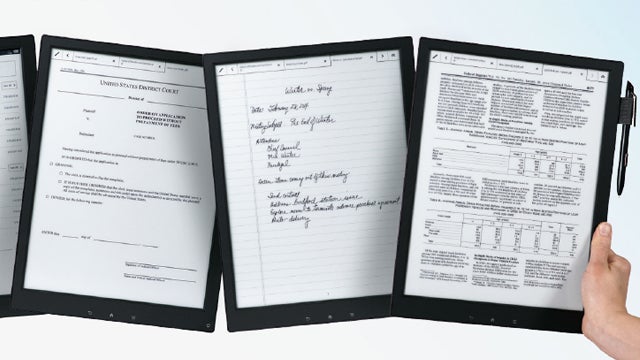Sony Digital Paper could be the future of newspapers, but not yet

Sony has finally put the Sony Digital Paper into production after teasing the device in May last year.
The Digital Paper could be the future of newspapers, but with a price of around $1,100 (£660) we doubt it’ll take off.
Sony’s 13.3-inch e-Ink Digital Paper system is designed for note taking as well as reading periodicals and the like and is the progression of Sony’s eReader products including the Sony PRS-T3, but may alienate all but the executive-level business users.
It features a 13.3-inch e-Ink display with a 1600 x 1200p resolution and is 6.8mm thin. Full letter-sized documents are displayed as PDFs, but the Digital Paper will let you annotate them using the accompanying stylus.
The fact it has a touchscreen means you can scroll through documents using touch gestures, but sadly it lacks a backlight.
It weighs 375g and even features 4GB internal storage bolstered by microSD card support. Charged by USB, the Digital Paper offers around 3 weeks of battery life.
Currently it only supports PDF files, but at least you can share your newly annotated documents via the Digital Paper’s inbuilt Wi-Fi connectivity. You can even browse the web too.
This could eventually be pioneering technology, but sadly will not appeal to the mass market at this price. Basically you’re paying the same price as a high-end tablet for a glorified notepad or paper print-out.
There are no UK pricing or availability details as yet, but we expect Sony might test the American market first with this rather unique product.
Read more: Amazon Kindle Paperwhite review

